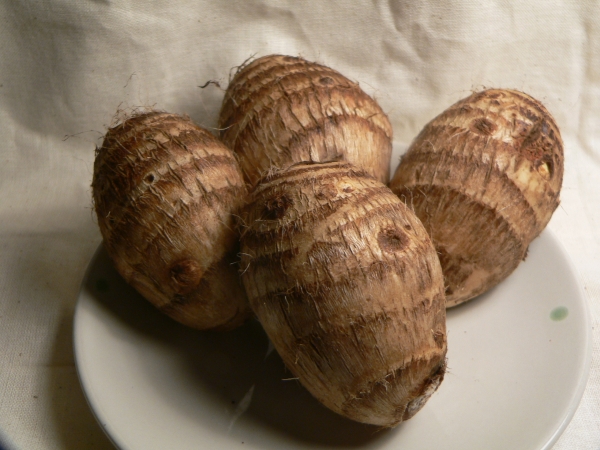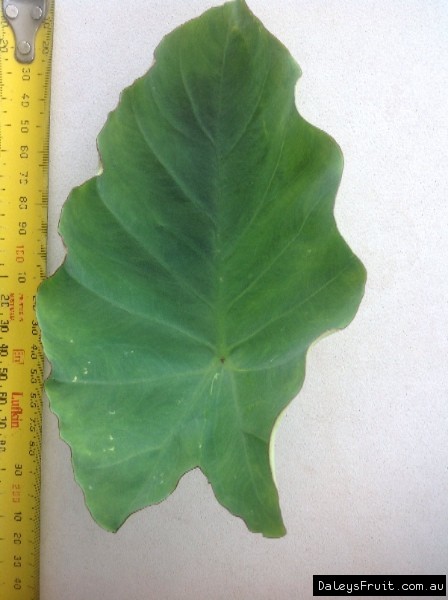Taro Japanese
Colocasia esculenta$17.90 ($17.90-$18.75 choose a size)
Specifications of Taro Japanese
Preferred Climate Tropical, SubtropicalLearn About Climate Zones
Grown From RhizomeLearn About Propagation Methods
Max Height (when in the ground with good conditions) 1-2m
Plants required to Pollinate 1 (Self Pollinating)Learn about Pollination
Can it Handle Frosts? Sometimes
Amount of leaves in Winter? All Leaves (Evergreen)
Suitability in Pots Yes
Water Requirements Frequent Watering
Is it a Dwarf Fruit Tree? Can be pruned to 2m
Time to Fruit/Flower/Harvest 2-3 Years
Sun or Shade Full (Sun:80%-100%), Part (Sun:50-80%)
Preferred Soil Type Poor Drainage (Clay)
Soil pH Neutral (6.6-7.3pH)
Fruiting/Harvest Months July, August, September
End of Season Tubers - Yellowing In Autumn
Create a Filter to find similar plants
Customers also bought
These plants are often purchased together. Also check plant information for suitability in your orchard.
Achacha - Grafted
$99.00
Persimmon - Izu (NA)
$84.00
Vanilla Vine
$29.00 ($24.00-$39.00 choose a size)
Palm - Dwarf Acai
$59.00 ($49.00-$59.00 choose a size)
Canistel Aurea
$79.00
Canistel - Grey
$79.00
Customer Tips & Reviews Taro Japanese
GILBERTON, VIC
Taro Japanese
I hoping to eat some eventually; I planted it some time ago but haven't attended to it as it's in an area of the garden with self-seeding daikon coming up. Once the diakon are more obvious and can be walked around (or harvested), I will inspect the taro.
TAMWORTH, NSW, Australia
I love taro. I used to plant it in our backyard when i was a kid. We usually used it for snacks as a substitute for bread or junk foods. Growing beautifully near the entrance of the house. I might harvest it at the start of winter and leave some to o...




























